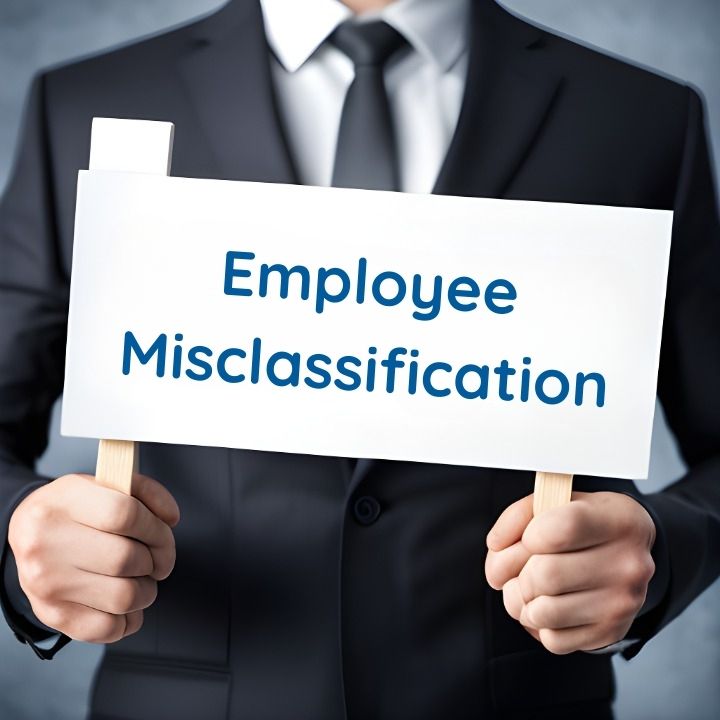Understanding Worker Classification: Avoiding Legal Risks for Your Business
In today’s evolving labor market, the distinction between employees and independent contractors has become a critical issue for many businesses. Misclassifying workers can expose companies to significant legal and financial risks, including audits by the U.S. Department of Labor (DOL) and the Internal Revenue Service (IRS). At Legal Marketplace CONSULTANT, we understand the complexities of worker classification and provide comprehensive legal support to ensure your business remains compliant with federal and state regulations.
This extensive article will guide you through understanding the importance of proper worker classification, the consequences of misclassification, how to identify correct classifications, and the services we offer to protect and support your business.
What Is Worker Classification and Why Does It Matter?
Worker classification pertains to categorizing individuals who perform services for a company as either employees or independent contractors. This classification affects tax obligations, eligibility for benefits, labor law protections, and reporting requirements. Misclassification can lead to underpayment of payroll taxes, violations of labor laws, and penalties.
In the U.S., agencies such as the Department of Labor and the IRS strictly enforce classification rules. Their focus is to ensure workers receive the appropriate rights and protections based on their actual working relationship with employers.
Key Differences Between Employees and Independent Contractors
Understanding the fundamental differences between employees and independent contractors is essential. Employees generally work under the control and supervision of the employer and receive benefits like health insurance, retirement plans, and workers’ compensation. Independent contractors typically offer their services to multiple clients, have control over how and when they perform work, and are responsible for their own taxes and benefits.
Factors Used to Determine Worker Classification
Regulatory bodies use several factors to determine whether a worker is an employee or an independent contractor. These factors include:
- Behavioral control: Does the company control or have the right to control what the worker does and how the worker does their job?
- Financial control: Are the business aspects of the worker’s job controlled by the payer, including how the worker is paid, whether expenses are reimbursed, and who provides tools/supplies?
- Type of relationship: Are there written contracts or employee-type benefits? Will the relationship continue and is the work performed a key aspect of the business?
No single factor is determinative; the totality of circumstances shapes the classification.
Potential Consequences of Misclassification
Misclassifying independent contractors as employees, or vice versa, can result in various penalties and liabilities, such as:
- Back payment of wages, including overtime and minimum wage violations.
- Payment of unpaid payroll taxes, with interest and penalties.
- Penalties for failure to provide required employee benefits.
- Legal fees and fines resulting from litigation or government enforcement actions.
- Damage to the company’s reputation and operational disruptions.
Common Causes of Misclassification
Businesses often unintentionally misclassify workers due to:
- Lack of understanding of classification criteria.
- Pressure to reduce costs associated with employment taxes and benefits.
- Failure to maintain up-to-date contracts reflecting actual work relationships.
- Evolving work arrangements such as remote work and gig economy roles.
How Legal Marketplace CONSULTANT Can Help
Our specialized legal team offers a range of services aimed at preventing misclassification and defending businesses during audits or disputes. These services include:
- Reviewing and drafting customized contracts for freelancers, consultants, and remote staff.
- Conducting internal audits of worker classifications to identify risks.
- Providing training and guidance on classification compliance.
- Defending companies during IRS or Department of Labor audits and negotiations.
- Advising on best practices to maintain proper classification under changing laws.
Best Practices for Ensuring Compliant Worker Classification
To minimize risk, businesses should adopt these best practices:
- Clearly define roles and responsibilities in written agreements.
- Regularly review contracts and worker arrangements for compliance.
- Maintain documentation supporting classification decisions.
- Avoid exerting control typical of employer-employee relationships over contractors.
- Consult legal professionals when unsure about classification.
The Importance of Staying Updated on Legal Changes
Labor laws and IRS guidelines evolve over time. For example, certain states adopt stricter tests than federal standards to determine worker status, such as the ABC test used in California. Staying informed of these changes is vital to ensuring ongoing compliance and avoiding audits. Our legal experts continuously monitor legislative developments and adjust client strategies accordingly.
Case Studies: Avoiding Pitfalls Through Proper Classification
Consider a technology startup that misclassified remote developers as independent contractors without proper agreements. Following a DOL audit, the company faced substantial back taxes and penalties. After engaging our team, they restructured their agreements and classification methods, successfully negotiating settlements and implementing compliant practices to prevent future issues.
Another example involves a marketing agency that regularly hired freelance graphic designers but exerted too much behavioral control over their work schedules and methods. We helped redefine contracts and worked with management to adjust practices, mitigating risk and streamlining operations.
Frequently Asked Questions (FAQs) About Worker Classification
- Q: How can I tell if a worker should be classified as an employee or independent contractor?
A: Review the degree of control, financial arrangements, and relationship terms. Consulting legal experts can provide clarity. - Q: What triggers an audit related to worker classification?
A: Complaints, random selection, or inconsistencies in payroll filings often prompt audits. - Q: Can I switch a worker’s classification after realizing a mistake?
A: Yes, but corrective measures should be taken promptly to minimize penalties. - Q: Are remote workers subject to the same classification rules?
A: Yes, classification rules apply regardless of the worker’s physical location. - Q: What documentation should I keep to support proper classification?
A: Written contracts, work logs, communication records, and payment proof are essential.
Partner With Legal Marketplace CONSULTANT for Your Compliance Needs
Navigating the complexities of worker classification requires expertise and vigilance. Legal Marketplace CONSULTANT is committed to protecting your business from legal exposure through tailored legal solutions. Our team’s proactive approach helps clarify roles, maintain compliance, and safeguard your company against costly penalties and audits.
If you suspect misclassification issues or want to strengthen your policies, contact us today. We provide thorough contract reviews, risk assessments, and defense services to ensure your workforce management aligns with current laws in 2025 and beyond.
Proper worker classification is a fundamental aspect that directly impacts your company’s legal and financial health. Misclassification can result in hefty fines, back payments, and damage to your business reputation. By understanding the criteria, implementing best practices, and partnering with specialized legal professionals like Legal Marketplace CONSULTANT, you can mitigate risks and focus on growing your business confidently and compliantly.
Don’t leave your worker classifications to chance. Clarify roles, update agreements, and stay informed about evolving regulations to protect your business today and in the future.
Legal Marketplace CONSULTANT offers expert legal services precisely tailored to workforce compliance, worker classification, and contract structuring for businesses across the United States.































